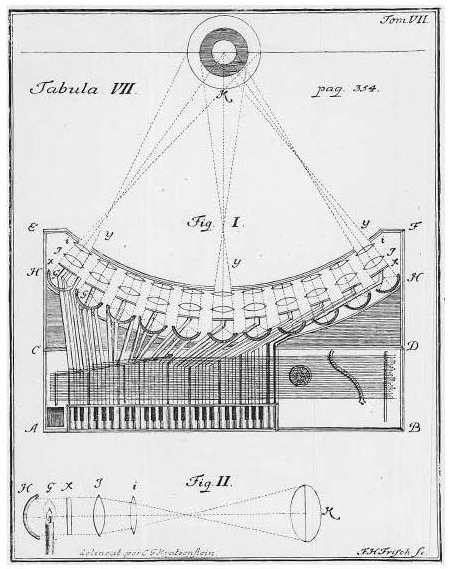(Johann Gottlob Krüger, 1743)

Anyone observing the beautiful colors that arise in the prism is easily led to the insight that it might be possible to delight the eye by the alternation and blending of the seven colors just as much as the ear by the seven tones. I have sketched such a machine…which is not unworthy of the name of ocular harpsichord.
